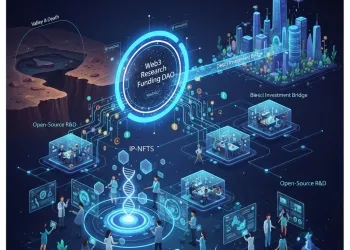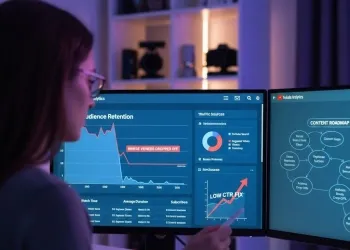How Internal Developer Platforms (IDP) boost Developer Experience (DX), and why it's the next evolution, or DevOps 2.0.
Platform engineering is a discipline focused on designing and building toolchains and workflows that enable self-service capabilities for software engineering organizations in the cloud era. It is essentially an evolution, often dubbed **DevOps 2.0**, that formalizes the responsibilities of a central team to create a managed foundation upon which application teams can build, deploy, and operate their applications with minimal friction.
The cornerstone of this discipline is the creation of an **internal developer platform (IDP)**. This IDP is a curated collection of tools, services, and best practices that cover the entire application lifecycle, from code commit to production deployment. Unlike a patchwork of disparate tools, the IDP is designed with a cohesive user experience, abstracting away the underlying infrastructure complexity.
The Problem Platform Engineering Solves: The Cognitive Load Crisis
In a mature **DevOps** environment, application developers are often expected to be experts not only in their application logic but also in Kubernetes, CI/CD pipelines, monitoring, logging, security, and cloud provisioning. This immense and constantly growing list of responsibilities is known as cognitive load.
The traditional approach leads to several significant pain points:
- Slower Feature Delivery: Developers spend too much time wiring up infrastructure and maintaining pipelines instead of writing business logic.
- Inconsistent Practices: Different teams implement infrastructure in different ways, leading to "snowflake" environments that are hard to audit, secure, and troubleshoot.
- Burnout and Low DX: The overwhelming complexity damages the **developer experience (DX)**, leading to frustration and lower productivity.
**Platform engineering** directly addresses this by creating a paved road—a golden path—that removes the need for application developers to interact directly with low-level infrastructure.
The Core Principle: Treating Internal Tooling and Infrastructure as a Product
The most fundamental concept in **platform engineering** is the philosophy of **treating internal tooling and infrastructure as a product**.
This shift in mindset means:
- Platform Team as a Product Team: The platform team acts like an external product team, and the application developers are their customers. They conduct user research (developer interviews), gather feedback, and create roadmaps based on the needs of their users (developers).
- Focus on DX (Developer Experience): The platform’s primary metric of success is the **developer experience (DX)** it provides. This involves making the platform intuitive, reliable, well-documented, and enjoyable to use.
- Iterative Development: The **internal developer platform (IDP)** is not a fixed, monolithic entity. It evolves iteratively based on user feedback and new technology trends, ensuring it remains relevant and valuable.
- Defined Interface: The platform provides clear, well-designed APIs, UIs, or CLIs that act as the single interface for application teams to consume services.
This product-centric approach is designed to **accelerate feature delivery, reduce cognitive load on developers, and standardize best practices**. By abstracting away the operational complexity, the platform team empowers developers to focus 100% on business value.
The Internal Developer Platform (IDP) and Self-Service Infrastructure
The **internal developer platform (IDP)** is the tangible realization of **platform engineering**. It's the integrated layer that enables **self-service infrastructure**.
Components of an IDP
A robust IDP typically includes, but is not limited to:
| Component | Description | DX Benefit |
|---|---|---|
| PaaS Layer (Abstraction) | A layer that abstracts Kubernetes, VMs, and networking, offering services like "Create New Service" or "Provision Database." | Reduces need for Kubernetes/Cloud expertise. |
| Configuration Management | Tools and templates (e.g., Terraform modules, Helm charts) that define infrastructure and application settings using codified **standardized best practices**. | Ensures consistency and compliance across all services. |
| CI/CD Pipelines | Pre-built, golden-path pipelines for testing, building, and deploying applications. | Eliminates pipeline setup and maintenance for developers. |
| Observability Stack | Integrated logging, monitoring, and tracing configured automatically for every new service. | Developers get immediate insight without manual setup. |
| Security and Compliance | Automated security scans, policy enforcement (e.g., GitOps, Policy-as-Code), and secrets management. | Shifts security left and ensures compliance by default. |
Achieving Self-Service Infrastructure
**Self-service infrastructure** is the key capability unlocked by the IDP. It means a developer can provision, configure, deploy, and manage their application's entire infrastructure stack—including databases, message queues, and deployment environments—**without opening a ticket or waiting for an operations team member**. This is achieved through the simplified interface of the IDP, which automatically enforces **standardized best practices** behind the scenes.
For example, a developer might use a simple command in a CLI provided by the IDP:
This single command triggers a complex workflow that provisions a K8s namespace, sets up CI/CD, links to the monitoring dashboard, and applies necessary security policies—all automatically and consistently.
Platform Engineering as DevOps 2.0
**Platform engineering** is frequently described as **DevOps 2.0** because it addresses the structural challenges that emerged as organizations scaled their initial **DevOps** adoption.
| Feature | Traditional DevOps | Platform Engineering (DevOps 2.0) |
|---|---|---|
| Responsibility Model | "You Build It, You Run It" - High cognitive load on application teams. | "Platform Team Builds It, You Consume It, You Run It" - Focus is on the product, not the undifferentiated heavy lifting. |
| Focus | Culture change, shared responsibility, and adopting disparate tools. | Creating a productized, integrated platform for **developer experience (DX)**. |
| Scaling | Challenges scaling expertise and ensuring consistency across dozens/hundreds of teams. | Achieves scale and consistency through **self-service infrastructure** and standardization. |
| Standardization | Highly variable, dependent on team expertise. | Enforced by design via the **internal developer platform (IDP)**. |
**Platform engineering** doesn't replace the **DevOps** culture of collaboration and automation; it operationalizes it by creating a dedicated team whose sole mission is to provide leverage to the rest of the organization.
Strategic Benefits and Business Impact
The adoption of **platform engineering** and an **internal developer platform (IDP)** offers profound strategic benefits that resonate across the entire business:
- Massive Productivity Gains: By automating the undifferentiated heavy lifting, platform teams provide a significant productivity multiplier. Developers can go from idea to production in hours, not weeks, directly **accelerating feature delivery**. Gartner predicts that by 2026, 80% of large software engineering organizations will establish platform teams.
- Built-in Governance and Compliance: The platform enforces security, cost, and compliance policies by default. This eliminates the "shift left" problem by ensuring the **standardized best practices** are the only paths available, making every deployment secure and compliant automatically.
- Talent Attraction and Retention: A superior **developer experience (DX)** is a massive advantage in the competitive tech talent market. Developers want to work on business logic, not infrastructure YAML. A well-designed platform makes the job more enjoyable and less frustrating, aiding retention.
- Reduced Operational Risk: The platform provides a unified control plane and observability standards. This means that when an incident occurs, teams are working with known, standardized patterns, reducing the time required to detect, diagnose, and recover.
The Future Trajectory: AI and the Evolving Platform
The future of **platform engineering** is intrinsically linked to advancements in AI and automated intelligence.
- AI-Driven IDPs: Future **internal developer platforms (IDPs)** will utilize generative AI to write infrastructure-as-code (IaC) or even business logic stubs based on high-level developer prompts. The platform will manage the complexity of the output, further simplifying the **self-service infrastructure** model.
- Hyper-Personalization of DX: Platforms will use machine learning to observe developer behavior and offer personalized 'golden paths' tailored to individual team needs while maintaining the core **standardized best practices**.
- The Unbundling and Rebundling of Tools: As new tools emerge, the **platform engineering** team's role will become one of constant curating and integrating—unbundling old, less efficient tools and rebundling best-of-breed components into a seamless IDP experience.
In conclusion,
**Platform engineering** is not merely a trend; it is the inevitable evolution of **DevOps 2.0**, providing the mechanism to scale both operations and development efforts simultaneously. By **treating internal tooling and infrastructure as a product**, platform teams are solving the developer cognitive load crisis, driving innovation, and directly linking operational excellence to business outcomes. The **internal developer platform (IDP)** and **self-service infrastructure** are the keys to unlocking the next decade of rapid, reliable, and delightful software delivery.



























